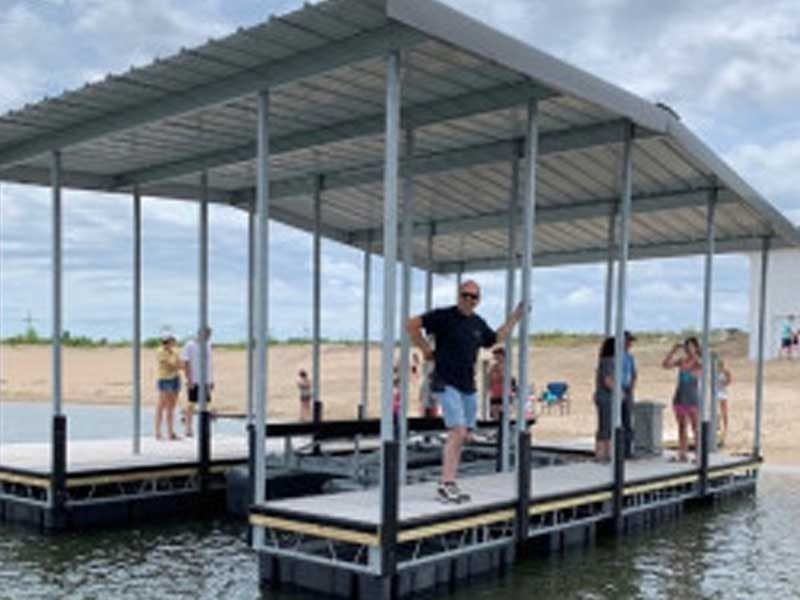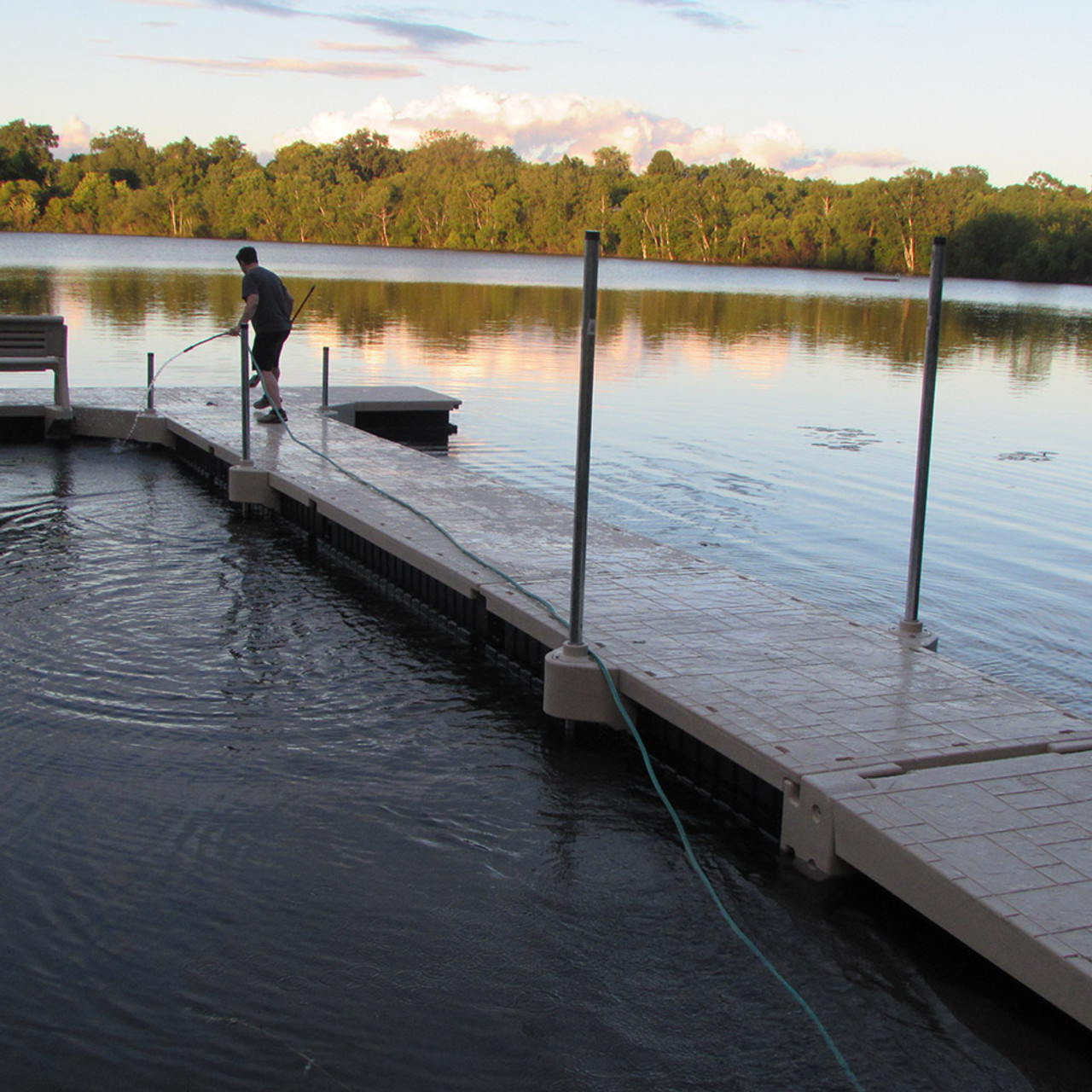Advantages of Dealing With a Developed Floating Dock Company for Comfort
Advantages of Dealing With a Developed Floating Dock Company for Comfort
Blog Article
Upgrade Your Beachfront With Long Lasting Floating Docks
Updating your waterfront with sturdy floating docks can significantly improve both capability and aesthetic appeals, offering a functional solution for different water tasks. With a variety of materials available, consisting of low-maintenance options and typical wood, picking the right dock can complement your personal design and satisfy useful demands.
Advantages of Floating Docks
Floating docks deal a wide range of benefits that improve their appeal for numerous maritime applications. One of the key advantages is their flexibility to changing water degrees - floating dock company. Unlike typical fixed docks, floating docks fluctuate with the tide, making certain constant accessibility for watercrafts and watercraft no matter of ecological problems. This function substantially lowers the threat of damages to vessels, as they stay safely anchored even throughout variations in water depth.
Furthermore, floating docks are less complicated to transfer and set up, supplying flexibility for seasonal or momentary usage. Their modular layout allows for customization to fit particular needs, whether for personal marinas, household beachfronts, or commercial applications.
In addition, floating docks create minimal disruption to the aquatic environment, maintaining neighborhood ecological communities and reducing the probability of erosion. They also provide boosted safety and security and security for customers, as their buoyant nature provides an extra flexible surface than stiff frameworks.
Additionally, floating docks can help with a varied array of tasks, such as angling, swimming, and entertainment boating, making them a beneficial possession for waterfront advancement. Their flexibility and usefulness make floating docks a recommended option for a variety of naval jobs.
Selecting the Right Products
Selecting suitable materials for floating docks is vital to their durability, performance, and overall effectiveness. When choosing materials, consider variables such as ecological exposure, maintenance requirements, and structural stability. Common materials consist of timber, plastic, light weight aluminum, and composite alternatives, each offering distinct advantages and downsides.
Timber, while cosmetically pleasing, needs routine maintenance to stop rot and degeneration. Pressure-treated timber can improve sturdiness, but it might still catch water damages over time. Plastic drifts, typically made from high-density polyethylene, are resistant to rust and need marginal maintenance, making them an attractive choice for low-maintenance applications.
Light weight aluminum is an additional feasible option, known for its toughness and lightweight properties. It is resistant to rust and can endure extreme weather, although it may be a lot more costly than various other materials. Composite materials incorporate the most effective qualities of timber and plastic, providing a resilient and low-maintenance choice that mimics the appearance of timber without the connected drawbacks.
Inevitably, the option of material need to align with the planned usage, ecological considerations, and budget restraints, making sure a functional and durable floating dock that fulfills your details requirements.
Installment Process Overview
The successful setup of a floating dock relies upon mindful preparation and execution, additional hints making certain that it runs effectively in its designated environment. The initial step entails evaluating website problems, consisting of water deepness, shoreline features, and dominating weather condition patterns, which will certainly notify the dock layout and anchoring system.
Following the website evaluation, the following stage is to prepare the floating dock components. This consists of assembling the frame, securing floats, and attaching any kind of necessary hardware. It is vital to make sure that all links are durable and water-resistant to stand up to aquatic conditions.
When the dock is put together, the setup procedure commences with placing the dock in the water. This can entail a crane or other training tools, particularly for larger structures. Proper placement is necessary for functionality and safety.

Upkeep Tips for Durability
Normal maintenance is essential for ensuring the long life and optimum performance of a floating dock. To achieve this, start with routine inspections a minimum of twice a year, concentrating on the honesty of the dock's structure, consisting of the flotation protection tools and attaching hardware. Look for indications of rust, wear, or damage, and attend to any concerns without delay to stop additional wear and tear.
Cleansing is an additional critical aspect of maintenance. Eliminate debris, algae, and barnacles from the dock's surface to stop unsafe problems and maintain visual appeal. Use a soft brush and a mild cleaning agent to avoid damaging the dock's materials.
Furthermore, guarantee that the dock is correctly secured and secured to hold up against seasonal modifications in content water levels and climate condition. Examine the anchoring system for security and make changes as required.
Enhancing Your Exterior Visual
To produce a visually attractive outdoor room, incorporating a floating dock can significantly enhance the general visual of your waterside home. Floating docks are not only practical however can likewise serve as a striking focal factor that complements the natural environments - floating dock services. Offered in numerous materials and layouts, these docks can be personalized to match your property's architectural style and landscape
The addition of decorative aspects, such as incorporated illumination or fashionable railings, even more boosts the dock's visual charm. Take into consideration making use of natural timber coatings, which blend effortlessly with the environment, or choosing for modern products like aluminum or composite outdoor decking that offer a streamlined, modern look.
Strategically placing planters or seating locations on or around the dock can create inviting areas that motivate relaxation and satisfaction of beachfront views. Additionally, incorporating colors and appearances that balance with your landscape will develop a natural aesthetic throughout your outside location.

Final Thought

Updating your waterfront with resilient floating docks can substantially improve both performance and aesthetics, offering a functional remedy for various water activities. Unlike conventional set docks, floating docks increase and loss with the tide, making certain constant availability for boats and watercraft no matter of environmental conditions.Selecting suitable products for floating docks is crucial to their durability, performance, and total efficiency.As soon as the dock is assembled, the installation process starts with placing the dock in the water.In recap, floating docks deal numerous advantages, including flexibility to water degree modifications and a range of material choices.
Report this page